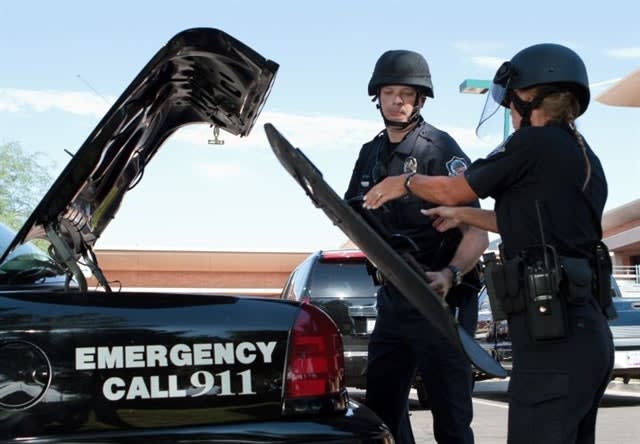3. In retrospect, should Henwood have placed a ballistic face shield/helmet on his head while sitting in his cruiser, assuming that it would have saved his life?
Thanks for any help. The information can be used in developing policy in the future for when a ballistic face shield should be worn.
I offered Stanley my own intuitions, which were largely in accord with his suspicions, then received the following reply from him:
The majority of officers I consulted feel that Henwood probably had heard the broadcast. Assuming he had heard it and assuming he knew his location and the location of the shooting in El Cajon 15 or so miles away and that his location and El Cajon were connected by major interstate highways with high speed limits, had he thought about how fast the shooter could be at his location? Had he considered that if he put the face shield and helmet on just in case the shooter came by his location? Had he considered that if he was wrong and the shooter did not show up at his location, there would be nothing lost on his part (the most he would have had the face shield on in the cruiser would be one half hour)? Had he considered that if he was right and the shooter was at his location within one half hour after the shooting in El Cajon and that he would engage the shooter in a firefight and that, without a face shield and helmet on in place and in the ready position, he could be shot in the head and never see his children or wife and they would never see him and grow up without his love?
I would like to believe that he would have chosen the course of having it on and be wrong and have worn it for nothing. But of course, we now know that he would have been right and when the shooter fired into Henwood's cruiser, his face shield and helmet would have stopped the bullets and he would have been able to return fire and that he would have survived and gone home to his wife and children.













